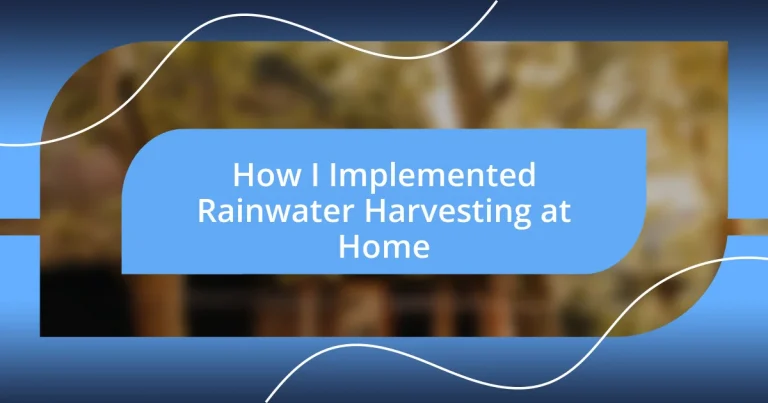Key takeaways:
- Rainwater harvesting reduces reliance on municipal water systems, minimizes stormwater runoff, and promotes sustainable living.
- Designing and installing an effective rainwater collection system involves careful planning regarding roof type, local climate, and adherence to regulations.
- Maintaining the system and maximizing water efficiency through practices like drip irrigation and mulching enhance the longevity and effectiveness of harvested rainwater.
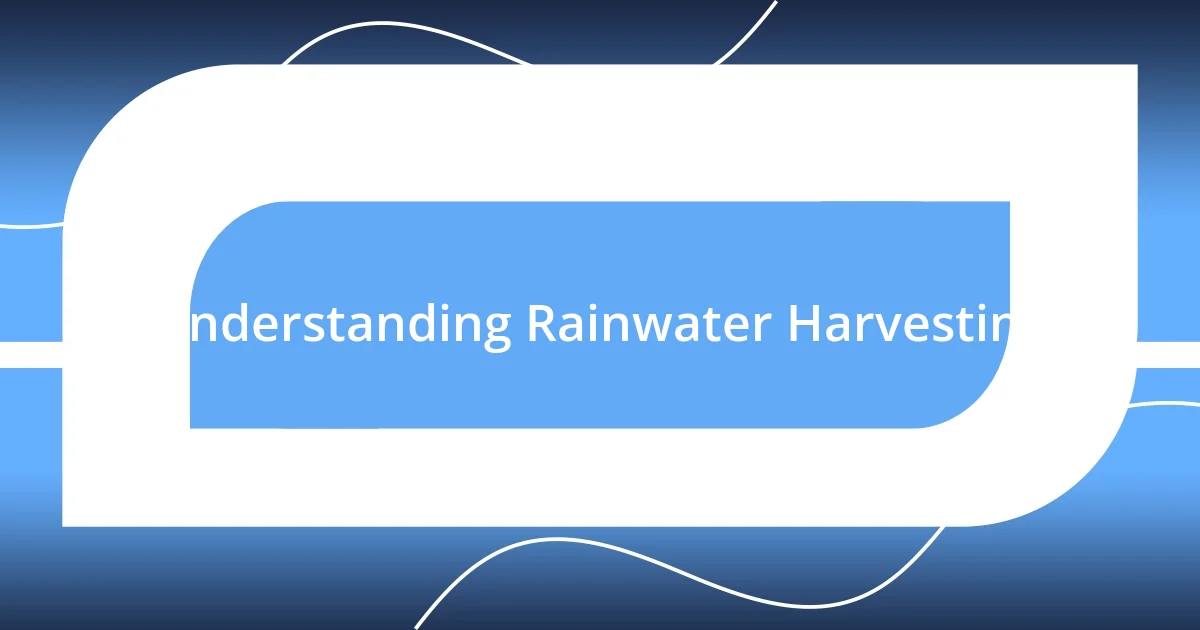
Understanding Rainwater Harvesting
Rainwater harvesting can be a transformative practice for any home. It involves collecting and storing rainwater from rooftops or other surfaces, which can be used for various purposes, from irrigation to flushing toilets. When I first learned this concept, I was amazed at how something as simple as rain could become a valuable resource right in my backyard.
One of the appealing aspects of rainwater harvesting is its environmental impact. By capturing rainwater, we’re not only reducing reliance on municipal water systems but also helping to prevent stormwater runoff that can lead to flooding and erosion. I remember the rainy season last year; it was thrilling to see my rain barrels fill up, knowing I was making a difference while also doing something practical for my household.
Have you ever wondered how much rainwater we let go to waste? In many regions, the amount can be staggering! This realization drove me further into the world of rainwater harvesting, and it opened my eyes to the idea that every drop counts. It’s not just about saving water; it’s about embracing a sustainable lifestyle that contributes to our planet’s health.
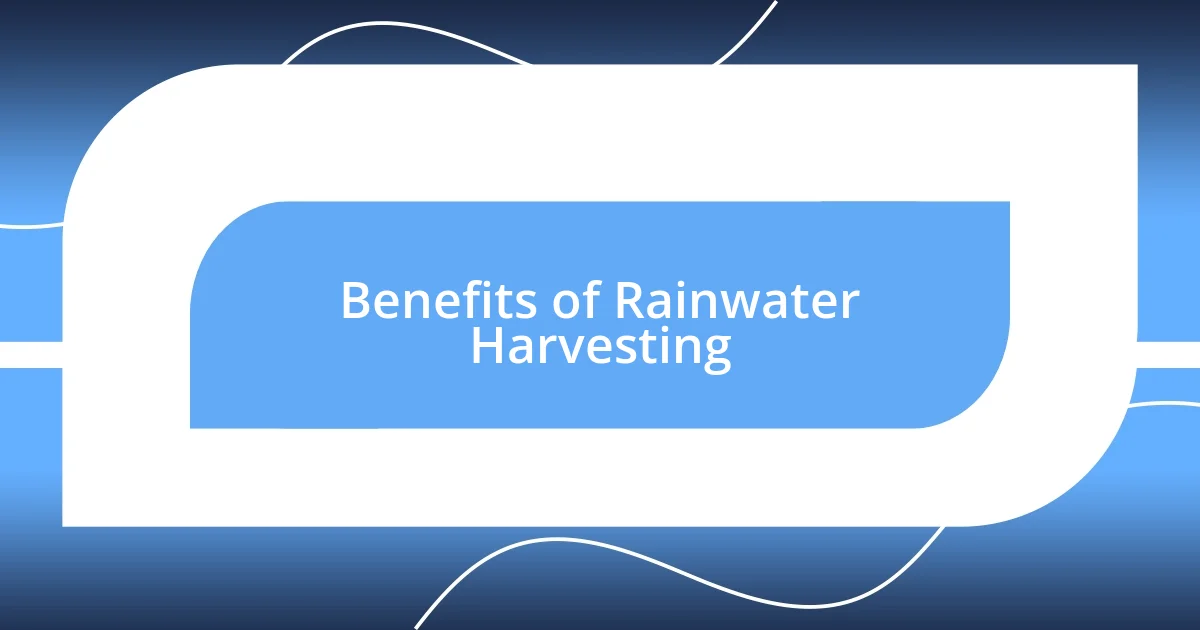
Benefits of Rainwater Harvesting
Rainwater harvesting offers numerous benefits that can enhance both your home and the environment. For me, one of the most significant advantages has been the reduction in water bills. In the months when I utilize my stored rainwater for gardening, I’ve noticed a drop in my utility expenses. It’s remarkable how saving a few extra dollars can add up over time, not to mention the joy of using fresh, untreated rainwater to nurture my plants.
Here’s a quick overview of the benefits I’ve experienced:
- Cost Savings: Decreased water bills by using harvested rainwater for irrigation and cleaning.
- Sustainability: Contributes to a greener environment by reducing demand on municipal water systems.
- Flood Prevention: Minimizes stormwater runoff, reducing the risk of flooding and erosion in your area.
- Better Plant Growth: Rainwater is often free of chemicals found in tap water, promoting healthier plants.
- Self-sufficiency: Creates a sense of independence from water supply shortages during droughts.
Each time I connect with my garden using harvested rainwater, it feels like I’m part of something bigger, fostering a relationship with nature that’s both joyful and fulfilling. The tangible benefits, from financial savings to environmental responsibility, make rainwater harvesting an enriching experience that I wholeheartedly recommend.

Assessing Suitability for Your Home
Assessing the suitability for rainwater harvesting at your home involves a careful examination of various factors. Start by evaluating your roof type and size, as these elements determine how much rainwater you can collect. When I first considered this project, I looked at my roof details and realized that my sloped roof would be ideal for maximizing rain capture. It filled me with excitement to think of the possibilities.
Another crucial aspect to consider is your local climate. Areas with consistent rainfall throughout the year are more favorable for rainwater harvesting. For instance, after moving to a region that experiences both dry spells and heavy rains, I felt motivated to create a system that could sustain my water needs during those infrequent downpours. It’s a bit like preparing for a rainy day; having a solid plan gives peace of mind.
Lastly, local regulations can influence your decision as well. Some areas have specific guidelines regarding the installation of rainwater systems. Navigating these requirements might seem burdensome at first, but once I connected with my local authorities, I felt empowered to proceed with my project confidently, knowing I was compliant. This journey isn’t just about installation; it’s about understanding your space and how rainwater harvesting can thrive within it.
| Factor | Impact on Suitability |
|---|---|
| Roof Type | Collection efficiency varies; sloped roofs tend to yield better results. |
| Climate | Consistent rainfall represents a greater potential for successful harvesting. |
| Local Regulations | Compliance ensures legal installation and operation of your system. |
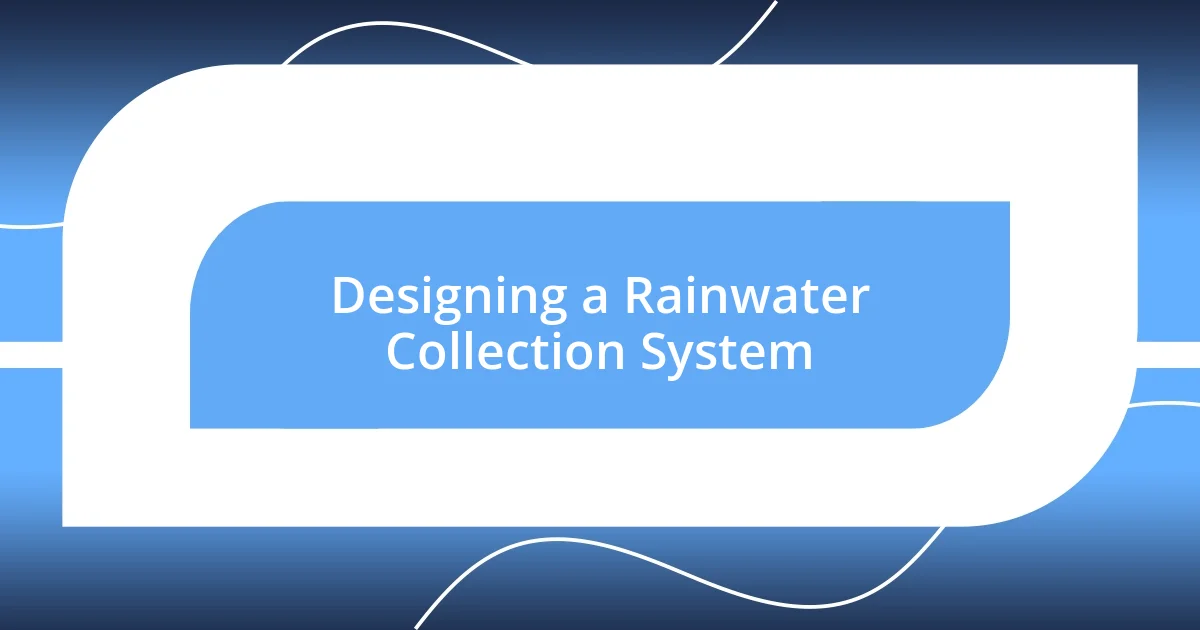
Designing a Rainwater Collection System
Designing a rainwater collection system starts with envisioning how you want it to work and what components you’ll need. When I began my journey, I spent hours drawing out my plans, excited to see the possible layout come to life. I included gutters, downspouts, and a storage tank in my design, imagining how rainwater would flow effortlessly into my garden.
I’ve found that choosing the right storage tank is crucial. After much research and comparing sizes, I opted for a 500-gallon tank, which seemed perfect for my needs and space. It was gratifying to think that the tank would soon be filled with rainwater, ready to nourish my plants, minimizing my reliance on the municipal water supply.
What’s your goal for capturing rainwater? I aimed not only to conserve but also to create a sustainable space in my garden. A thoughtful design can enhance both functionality and aesthetics. For example, integrating the collection system with barrels that double as decorative elements really elevated the overall look. It’s about making your efforts not just practical but also beautiful, discovering ways to harmonize functionality with that joyful twist in your outdoor space.
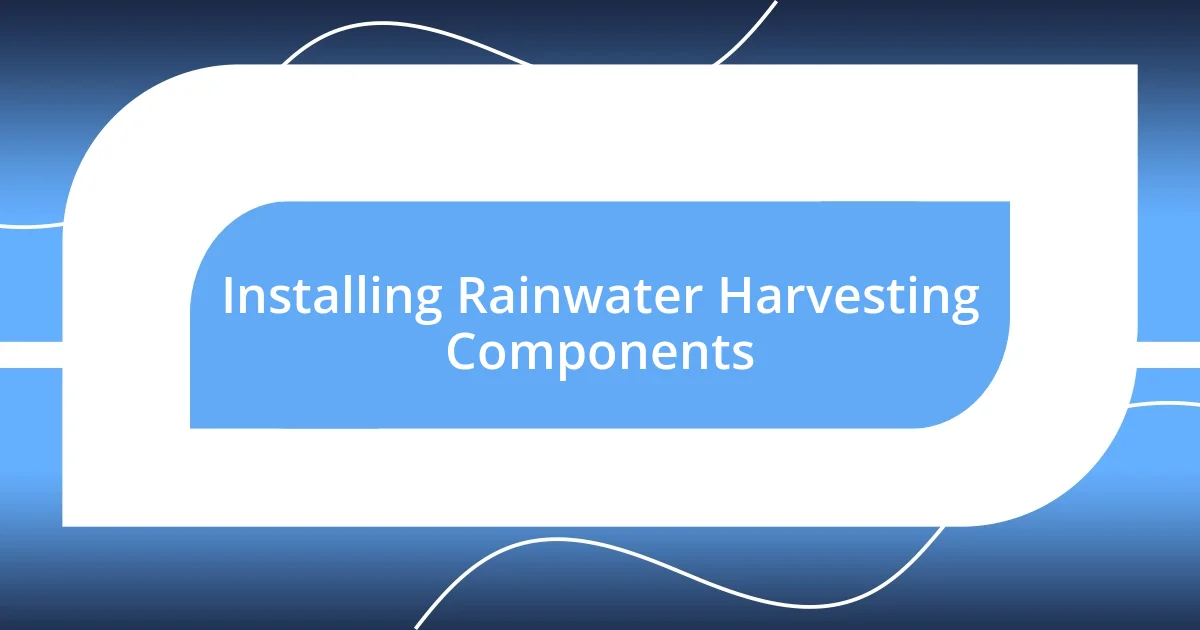
Installing Rainwater Harvesting Components
Installing the components for my rainwater harvesting system was both thrilling and a bit daunting. I started by attaching gutters securely to the edges of my roof. As I climbed the ladder, I felt a mix of nervousness and excitement, thinking about how much water I could collect to nurture my garden. Those little channels would play such an important role!
Once the gutters were set up, I installed downspouts to direct the rainwater into my storage tank. I remember the moment I connected everything—it was as if my vision was finally becoming reality. Watching the first drops of rain flow through the system was incredibly satisfying. How often do we get to witness our plans come to life, right before our eyes?
To complete the installation, a filtration system was needed to ensure the water collected was clean and safe for use. I decided on a simple yet effective first-flush diverter, which captures the initial dirty water from the roof. I was thrilled at the thought of contributing to sustainable living while safeguarding my plants. It really made me appreciate the elegance of simplicity and the effectiveness of proper setup in achieving my eco-friendly goals.
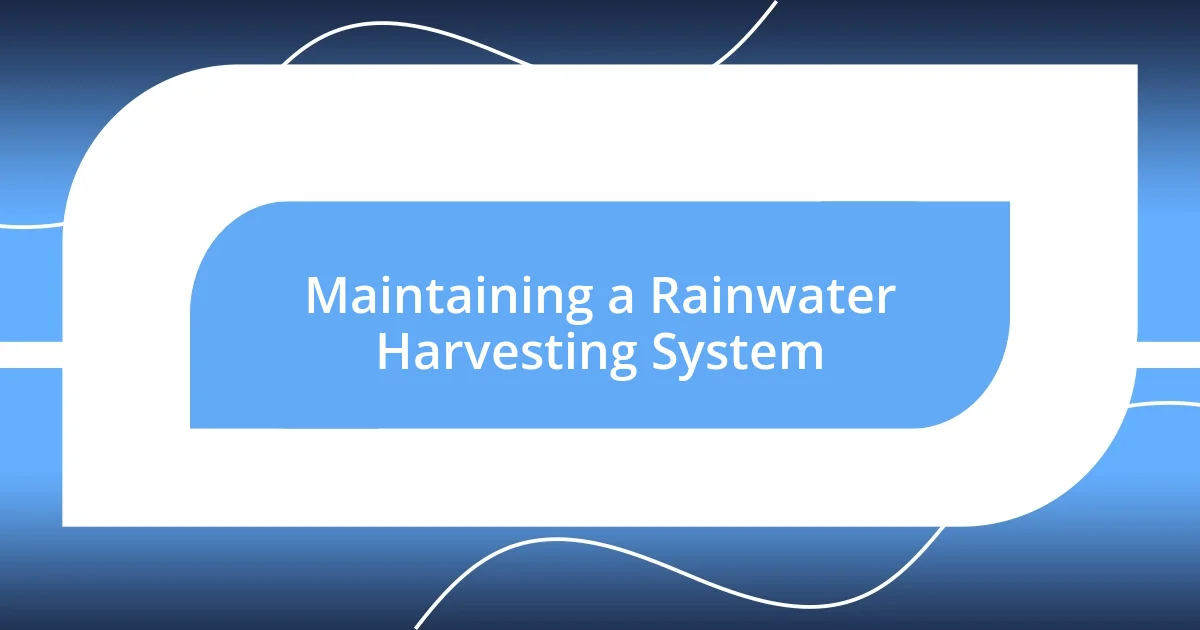
Maintaining a Rainwater Harvesting System
Maintaining a rainwater harvesting system is essential for its longevity and effectiveness. I quickly learned that regular check-ups become part of your routine—you want to ensure that gutters are free of debris. The first time I climbed up to inspect the system post-storm, I felt a sense of responsibility, knowing that even a small blockage could thwart my hard work.
Then there’s the need for proper tank maintenance. I remember the first time I had to clean the tank; as I emptied it to scrub the insides, I was amazed at how much sediment had accumulated. It’s a bit of a messy task, but getting my hands dirty reminded me of the tangible benefits of the effort—clean water for my garden. Have you ever felt that satisfaction from taking care of something you’ve built? The connection is profound.
Lastly, I discovered the importance of monitoring water quality. After a particularly rainy season, I decided to test the water, and to my surprise, it wasn’t as pristine as I had hoped. This prompted me to invest in a more thorough filtration system. Seeing how clearer water benefited my plants made me realize that maintenance doesn’t just keep the system running—it can improve the quality of what you’re nurturing. I truly believe that ongoing care transforms this process into a true partnership with nature.
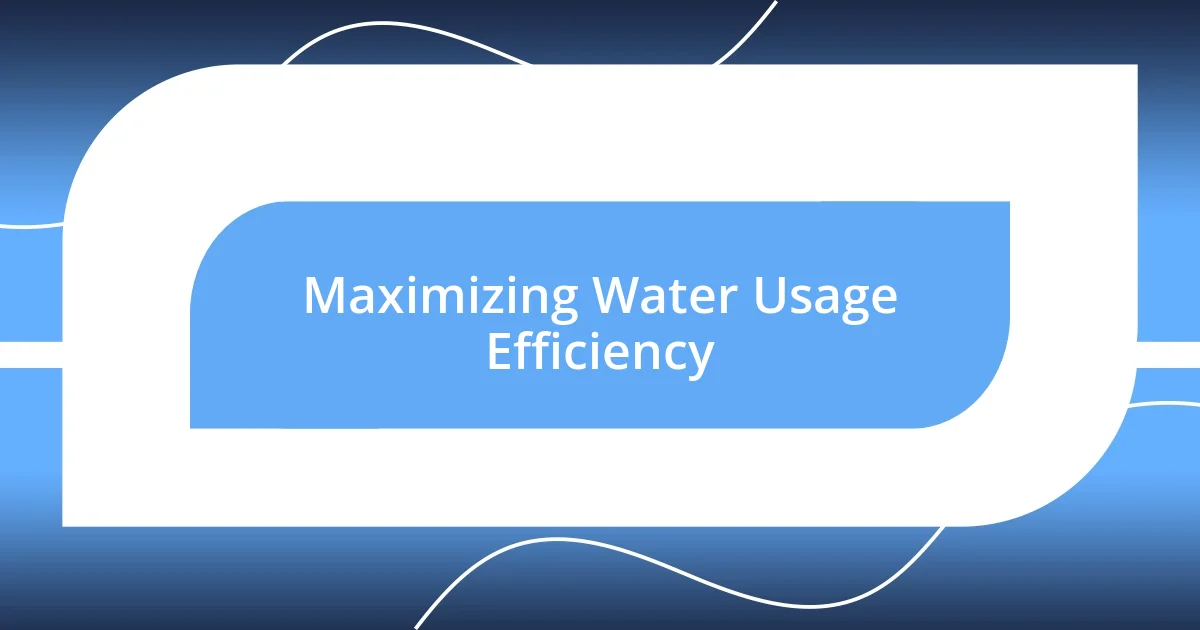
Maximizing Water Usage Efficiency
Maximizing water usage efficiency is crucial in making the most out of my rainwater harvesting system. I discovered early on that simply collecting rainwater wasn’t enough; I needed to ensure that every drop counted. I started implementing drip irrigation for my garden, which allowed me to deliver water directly to the roots of my plants. This system not only conserved water but also kept my plants thriving. Have you ever noticed how different your plants look when they receive just the right amount of water?
I also explored mulching as a way to retain moisture in the soil. One weekend, I spent hours spreading layers of organic material around my garden beds, feeling the sun on my back and gratitude in my heart. The beautiful thing was seeing how much less I had to water; the soil held onto moisture longer. It’s remarkable how such a simple practice can help maximize water efficiency and reduce effort over time, don’t you think?
Another strategy that proved beneficial was harvesting rainwater for specific tasks. I began using collected rainwater to wash my car and clean outdoor furniture instead of tapping into the municipal supply. That first time I rinsed my car down with my own rainwater felt rewarding, almost like I was giving new life to my vehicle while being responsible. It’s a satisfying loop of efficiency, making sure that every drop is purposefully utilized. Imagine how empowering it can feel to repurpose water instead of letting it go to waste!












